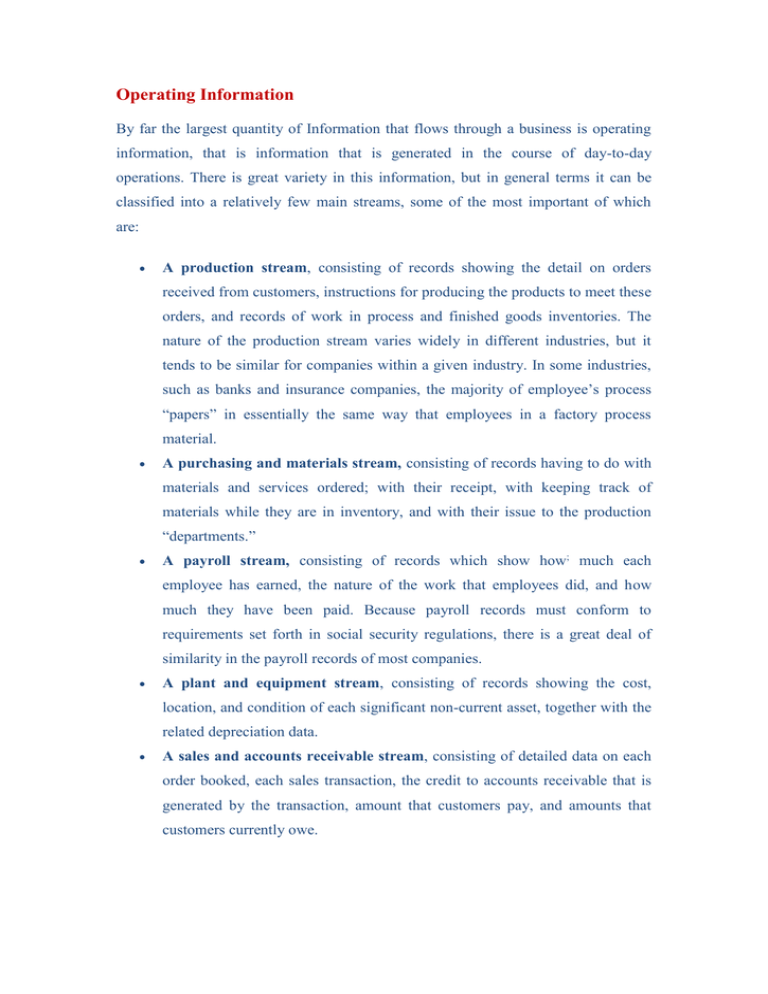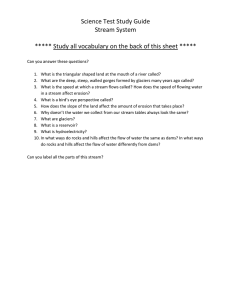Operating Information
advertisement

Operating Information By far the largest quantity of Information that flows through a business is operating information, that is information that is generated in the course of day-to-day operations. There is great variety in this information, but in general terms it can be classified into a relatively few main streams, some of the most important of which are: A production stream, consisting of records showing the detail on orders received from customers, instructions for producing the products to meet these orders, and records of work in process and finished goods inventories. The nature of the production stream varies widely in different industries, but it tends to be similar for companies within a given industry. In some industries, such as banks and insurance companies, the majority of employee’s process “papers” in essentially the same way that employees in a factory process material. A purchasing and materials stream, consisting of records having to do with materials and services ordered; with their receipt, with keeping track of materials while they are in inventory, and with their issue to the production “departments.” A payroll stream, consisting of records which show how; much each employee has earned, the nature of the work that employees did, and how much they have been paid. Because payroll records must conform to requirements set forth in social security regulations, there is a great deal of similarity in the payroll records of most companies. A plant and equipment stream, consisting of records showing the cost, location, and condition of each significant non-current asset, together with the related depreciation data. A sales and accounts receivable stream, consisting of detailed data on each order booked, each sales transaction, the credit to accounts receivable that is generated by the transaction, amount that customers pay, and amounts that customers currently owe. A finance stream, consisting of records of cash movements and cash balances, investments, borrowings and payments made to lenders, and dividends and other transactions with shareholders. Cost stream, consisting of records of costs incurred in manufacturing goods or rendering services. Responsibility accounting stream, consisting of the revenues, expenses and investment of responsibility centers. With the exception of the responsibility accounting stream, these streams of information are required for purposes other than management control. Summarizing data that was originally generated for other purposes derives much information used in the management control process. The additional cost of using these data for management control purposes is relatively small. Indeed there is such a tremendous difference in the cost of summarizing information that exists in these operating streams and the cost of collecting-data, that systems designers often specify that management control information be obtained from operating information, even though the available data are not quite what is desired. Credit: Management Control Systems-MGU


